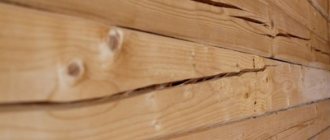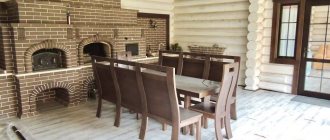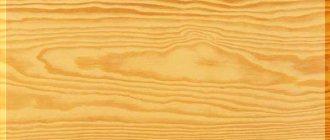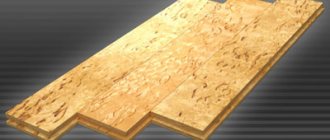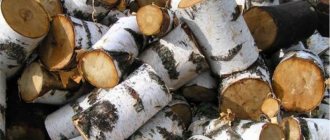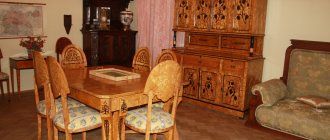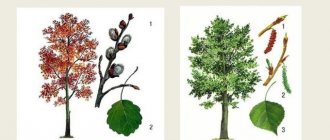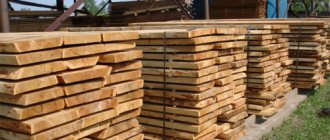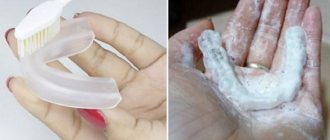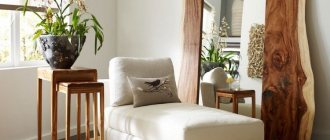Home » Texts » Birch house
Frame houses have gained incredible popularity among summer residents and homeowners in the last decade. Houses built using frame technology are durable, easy to construct and operate, and frame house designs are so diverse that they allow you to find exactly the option you need. Here are the main advantages of frame houses:
l The cost of construction is lower compared to other technologies, be it brick or laminated timber. The price is reduced not only due to the material itself, but also due to the simple foundation, floors and finishing.
l Construction speed is faster and easier. Forget about the years spent on construction, the frame can be assembled in a couple of months, and for full construction (with finishing, foundations, etc.) it will take no more than six months. You can quickly move into your new home.
l Operating a private home has never been as cheap as with the advent of frame technology in Russia. The thermal conductivity index is low, which means that you can save on heating in the cold season and still count on a cool microclimate in the summer. All this makes your stay comfortable.
l Excellent sound insulation. All our clients note the unusual silence of the house, which cannot be compared with apartments. During construction inside the walls, special materials are used that absorb 70% of extraneous noise, which means that you can always be in a separate room, even if there is a noisy party in the house.
l Construction at any time of the year! Regardless of the season, you can build structures without fear even in sub-zero temperatures. There is also no heavy equipment on site and no “wet” processes, such as mixing concrete.
The construction of frame houses traditionally involves the use of wood. A wooden house in the minds of many people is associated with something beautiful and fresh, as close as possible to nature. But what thoughts come to your mind when you hear the phrase “birch house”? And in fact, why are pine and maple often found in house construction, but birch is not? Let's figure it out together.
Properties of birch wood
Birch is diverse, it has about a hundred species , but only two are used in the woodworking industry - pendulous and pubescent. The trunk can be up to a meter thick and up to 40 meters long.
Birch wood is light and coreless. That is, the border between the core and the sapwood is not visible, it is uniform in color. However, there are cases of the formation of a false nucleus, when with age the inner layers change color to a darker color and become light brown.
Construction birch is quite real. That is, there are trees with straight trunks, but what is its use in construction will be discussed further.
The color of the wood varies from light yellow to light brown, with shades of pinkish and reddish (!more about painting here).
Density varies, but the average for dry wood (12% moisture content) is 650 kg per cubic meter. This suggests that the tree is a medium-dense species.
As for hardness, the data is different everywhere, ranging from 3 to 3.6 Brinell units. This is less than that of oak, but much more than that of linden (of which furniture, windows, doors and shelves are best known) and aspen. Iron birch has a higher hardness, but it is rare and is also rarely used and not in construction.
The hardness of birch is one of the essential, often mentioned properties.
They say that old wood is very difficult to cut with tools. IMPORTANT! However, there is also bad news. The resistance of birch wood to rot is lower the more humid the environment it is used in.
From here you can draw a conclusion about the potential of a birch bathhouse. But take your time! Birch lumber rots most quickly where there is contact with water and/or ground. Moreover, we are talking about untreated wood.
Wood species
In general, both coniferous and deciduous trees are suitable for this purpose. We will look at five types of wood for building a house: pine, spruce, linden, birch and oak.
The house can even be floating. The main thing is to choose the right material for it
Pine
Pine is considered the most common wood species in Russia. Its main advantages are low cracking after drying and low shrinkage. In addition, it is rot-resistant, has good toughness, moderate warping, strength and durability. The wood has a beautiful and clearly drawn structure. Plus, it's inexpensive.
There are 125 species of pine in total, but we are usually talking about Scots pine. In warm climates it grows in the mountains, in temperate and cold climates - on the plains. In the northern hemisphere, the tree is distributed all the way to the Arctic Circle.
Pine can grow up to 50 m tall and up to 1 m in diameter. At the same time, the length of the trunk without branches reaches 20 m. The average density of wood is 520 kg/m3 with a humidity of 12–15%. This is quite a lot, so pine is not considered a lightweight material. Another interesting property is the wide range of mechanical properties. They directly depend on the origin and growth conditions of the tree.
A striking negative property of pine is the appearance of surface blueness. It does not change the mechanical properties of the material, but worsens the appearance. Blue stains can be successfully combated using bleaching.
Features of the workpiece
Pine trees are cut down at the age of 100–120 years. High quality wood over 160 years old. Depending on the growing conditions, the specific gravity and density of wood change. On well-moistened and fertile soils, trees with a loose structure and low density grow. Such wood is called myand wood. The best material is provided by trees growing on sandstones, hills or hills - dry and infertile soils. This wood is called kond wood and is distinguished by its fine-grained structure and high density.
Processing Features
Pine is a soft material and can be easily processed. It is easy to saw across the grain and difficult to saw along. With planing the situation is the opposite: along the grain is good, across it is bad. The material glues well and is connected using fasteners.
According to the degree of resin, pine is divided into tar and dried wood. The first contains a lot of resin, resists moisture well, but is difficult to process. The resin clogs the tool, bleeds through the coatings and swells when heated. This pine is suitable for building a house, but it must be deresined with special compounds. Dried wood chips are perfectly planed, cut, painted and pickled, but are not able to withstand high loads. It is suitable for carpentry work.
Spruce
Spruce in Russia ranks second in prevalence after pine. The tree grows up to 60 m in height and up to 1.2 m in diameter. This material can retain its natural color for decades, and this is one of its main advantages. Spruce, like pine, is a soft, deformation-resistant and low-drying species. In terms of flexibility, it is even superior to pine and practically does not turn blue.
The average density of spruce is 470 kg/m3 with a humidity of 12–15%. It is considered a lightweight material. Wood has a loose structure, so it retains heat in rooms better. Its weak point is its susceptibility to splitting when dried and low moisture resistance. Such material must be coated with moisture-repellent compounds.
Features of the workpiece
Spruce suitable for building a house is harvested at the age of 80–120 years. It does not have the same dependence on growing conditions as pine.
Spruce is an ideal material for making musical instruments. This is explained by the very uniform arrangement of the fibers and the formation of microscopic resonance chambers when the resin ducts dry.
Processing Features
Despite the softness of the wood and low resin content, processing spruce is a rather complex process. It is complicated by a large number of small and hard knots in the material.
Linden
Linden is often used to build a bathhouse. Meanwhile, it is quite suitable for the construction of warm and cozy buildings. This tree grows up to 30 m in height. One of the main advantages of the material is its low level of heat transfer. Linden is soft, loose and elastic. It cracks and warps during drying, but remains stable afterwards.
The average density of the material is 530 g/m3 with a humidity of 12–15%. On the plus side, linden does not attract rodents at all. The disadvantages are that wood turns yellow in the sun, causes corrosion of iron, is easily damaged by fungi and is short-lived. Requires a protective covering when used.
Features of the workpiece
Harvesting of linden begins when it reaches the age of 80 years. Features of growing conditions do not affect its properties.
In total there are about 45 species of linden. In Russia there are two varieties: European and large-leaf. The first is considered denser, harder and heavier, but this difference is insignificant.
Processing Features
Linden is easy to cut, split, bend and plan. At the same time, it does not absorb moisture well, so it is difficult to paint. The easiest way out is to coat the surface of the wood with varnish.
Due to the ease of processing, in tsarist times, swindlers made copies of princely or royal seals from linden. This is where the expression “false seal” comes from.
Birch
Building a house from birch is even more rare than from linden. The main reason is the fragility and severe shrinkage of the material. At the same time, birch is resistant to impact loads, high hardness, strength and elasticity.
It grows up to 20 m in height and 70 cm in diameter. The average density of wood is 650 kg/m3 with a humidity of 12–15%. Birch is quite heavy and viscous, but it takes a long time to dry and is prone to cracking and warping. Without a protective coating, it is easily attacked by fungi.
Features of the workpiece
The tree is cut down at the age of 60–80 years. The relationship between growing conditions and properties is weakly expressed.
In total there are about 100 species of birch. Two varieties with similar characteristics grow in Russia: downy birch and silver birch.
Processing Features
Birch is well planed, milled and bent, but does not chip well. It can be glued, connected using various fasteners and coated with any protective compounds.
Oak
Oak is an almost ideal material for building a house. It has many advantages: durability, moisture resistance, reliability, high strength and hardness, elasticity, resistance to weathering, abrasion and rotting.
Oak grows up to 40 m in height and can reach 3 m in diameter. The average density of wood is 700 kg/m3. This is a heavy and dense material. It does not harbor mold fungi and insects. Oak is suitable for use in any climatic conditions. It dries slowly, and its main and only drawback is its high price.
In total there are about 600 species of oak. In Russia, only one is widespread - petiolate.
Features of the workpiece
The following relationship is characteristic of oak: the older it is, the higher the quality of the wood. In general, trees over 100 years old are harvested. The conditions under which they grow affect the properties of the final material. If an oak grows in a dry, sandy place, it is fine-grained, hard, but inelastic. If on the shore of a reservoir - large-layer, elastic, heavy, but susceptible to cracking. In other cases, oak has transitional qualities.
Processing Features
Oak is a hard material, so it is difficult to cut, but it bends well. It can be easily varnished and etched. The material is not usually painted, but can be subjected to artificial aging.
Log, timber, lining
In this article we are not talking about firewood or crafts made from birch, not about industrial use, but only about the possibility of using it in construction. There are few such possibilities: either to be built from logs/timbers, or to decorate the inside of the bathhouse with birch clapboard.
On sale you can find advertisements for the sale of birch beams or rounded logs, they are inexpensive, you can build from them, but only on the condition that you check the entire batch, because this tree has a strong tendency to warp .
ATTENTION! If birch is dried without a press , then warping will occur. Find out the drying conditions and measure the moisture content of the purchased wood - if you have to dry it at home, then only under pressure.
We said above that there is no need to rush to conclusions. You can very well build from timber or logs, but on the condition that you have very good ventilation , and you make internal thermal insulation , and then line the bathhouse with clapboard made of another tree, more resistant to a humid atmosphere.
Of course, one could say that in dry rooms it is possible to line the walls and ceiling with birch clapboard . But we won’t, because the humidity in the bathhouse always increases during procedures, no matter in what room.
ADVICE! It is birch lining that should not be used in a bathhouse. It's good where it's warm and dry, but it's not about a bathhouse.
Returning to the construction of a log house, in advance of treating the logs or timber with an antiseptic and water-repellent compound. In this case, the bath will last longer. But remember that processing must be resumed from time to time.
We have a lot of materials on processing, we recommend you look at: Choosing what to process boards in a bathhouse, Logs for a bathhouse: which is better and how to process them?, Methods of processing and laying timber in a bathhouse.
In general, there is no categorical ban on construction from birch. But in practice it is used only if there are no other alternatives. Because they understand the characteristics of a given tree and take them into account. The birch ax handle behaves just fine. And a building or a fence...
Defects and quality of wood.
According to GOST, lumber is divided into grades, which depend on the quality of the lumber. So, the wood is divided into four, and the board into five classes.
For the construction and finishing of the main surfaces during the construction of a house, only the selected material or the first grade of lumber is suitable. Other lumber options can be used as auxiliary ones, since they have many disadvantages that are unacceptable for capital buildings.
So, when buying lumber, pay attention to the following disadvantages:
- Putrid spots appear as reddish and dark areas. The structure of rotten wood is fragile and loose.
- Fungal infections. If this defect occurs in wood, bluish or gray-black blurry spots of different sizes appear on its surface. The fungus itself does not weaken the strength of the wood structure, but creates favorable conditions for the development of humus. Small areas infected with fungus are treated with antiseptic impregnations.
- Sapwood or bark are young, actively growing layers of a tree trunk, characterized by high humidity, low endurance and low resistance to damage by parasitic microflora and insects. The presence of this layer on structural wood is considered a defect.
- Knomelos are a pronounced increase in diameter that forms in the lower part of the trunk, which differs in greater hardness and structure from the main wood.
- Wane is the remaining part of the bark along the edges of a wood product, which makes its geometry imperfect and can lead to contamination of the material by fungi and flat wood insects.
- Sprouts form in wood due to mechanical damage, due to which the bark grows in the structure of the trunk.
- Cracks can occur due to adverse natural influences or during drying of lumber, which leads to rupture of wood fibers.
- Wormholes - damage to a tree by a beetle. This defect significantly reduces the strength of the building material.
Now, having determined what defects may be present on wood classified as inferior, you should find out how products of the highest and first quality differ from it.
Premium or selected . These products include wood from selected raw materials. They may contain:
- a minimum number of small healthy nodes located in different areas of the product;
- end cracks of varying depths, but not more than 10% deep and 16% shallow.
The presence of wrinkled and rotten knots and fungal manifestations is unacceptable. The deformation and unevenness of the edges is set within 1 ÷ 2%. The core of the trunk is completely excluded as the weakest point of the wood.
First grade . This category includes lumber of regular geometric shapes. Unlike selected products, in first class the following is allowed:
— healthier knots by about 10%;
- fungal stains and mold, the total area of which should not exceed 10% of the total area of the product;
— sawing defects on surfaces and edges, not exceeding 1/6 of the total length of the product;
The presence of putrefactive manifestations that destroy the structure of the wood is not allowed.
Boards of this class are used in all areas of construction and finishing work.
Second class. The following defects are allowed for wood in this category:
- greater tendency of fibers when sawing;
— presence of resin pockets in softwood lumber;
- blue and gray-black color caused by fungi;
— significant reduction (cutting error).
This type of wood is used for preparatory work - for example, when assembling formwork, when constructing temporary scaffolding. This slab is also suitable for turning under roofs.
Third grade wood is used for attachments and temporary buildings, as well as for the manufacture of containers. The following defects are allowed in related products:
— significant tilt (annual rings on one side of the log are significantly thickened);
- resin bags - up to 4 pieces per meter of shoulder straps;
- wormholes in any part of the product;
— any number of sound nodes of any size;
- cracks in the tank, etc.
The fourth class , like the previous one, is used only for preparatory and auxiliary work. This wood can have many different defects, including wormholes, rot (10%), bluish tint, severe and dull fading, warping and winging.
So, to summarize, it is worth briefly highlighting the main parameters that you should pay attention to when purchasing timber for building a house:
The wood must have clear geometric shapes and a minimum number of the above defects. The annual rings should fit tightly to each other - this indicates the quality of the wood. Wood moisture content should not exceed 20 ÷ 22%. It is not recommended to buy wet lumber, since it is very difficult and often impossible to dry it properly without causing deformation. However, if for some reason such a decision is made, then it is better to lay the damp wood under a canopy or in a well-ventilated area.
In this case, each row in the stack is stacked from the adjacent one in columns of the same section. And exactly in a row, the boards (wood) should not touch each other. It is recommended to purchase lumber from a reliable supplier who, at the buyer’s request, can provide documentation for a specific batch of wood and demonstrate the quality of sorting.
Birch bath: pros and cons
In principle, everything is already clear, but it’s worth summarizing what was said above.
The main advantage of birch is its low cost. This is a common tree that is used mainly in the manufacture of plywood; there is little demand for it from private buyers, so it can be purchased cheaply.
Hardness, unfortunately, does not play a special role, and if it does, it will only be to the extent that it will be difficult to process the wood. Therefore, we will classify it as a minus.
But the biggest disadvantage , of course, is its instability to rotting. In essence, the decay of organic matter is either its decomposition with the help of fungi or bacteria. Wood is decomposed by fungi. food, warmth and to reproduce .
There is an abundance of this in the bathhouse, so protection must be carried out in two directions - you need to make the food (wood) tasteless, that is, soak it in an antiseptic, and you need to ensure that dries as quickly as possible after the procedures, that is, think about ventilation, make it forced if necessary.
All that remains is to weigh your circumstances and decide what is more important to you - cheapness or durability of the building. Include in the cost the purchase of antiseptics and water-repellent impregnations (a separate article is devoted to wood with industrial impregnation).
Comparative characteristics of different wood species*
Breed
| Dryness coefficient, % | Mechanical strength, MPa | Rot resistance | Hardness | Average density, kK/m3 | |||||
| Radial direction | In tangential direction | Compression (along the fibers) | Bend | For chipping in the radial plane | For chipping in tangential plane | ||||
| Pine | 0,18 | 0,33 | 43,9 | 79,3 | 6,9 | 7,3 | Moderate-low | 380–1240 | 380–600 |
| Spruce | 0,14 | 0,24 | 42,3 | 74,4 | 5,3 | 5,2 | Low | 660 | 470 |
| Linden | 0,26 | 0,39 | 39,0 | 68,0 | 7,3 | 8,0 | Low | 400 | 530 |
| Birch | 0,26 | 0,31 | 44,7 | 99,7 | 8,5 | 11,0 | Low | 1 260 | 650 |
| Oak | 0,18 | 0,28 | 52,0 | 93,5 | 8,5 | 10,4 | High | 1 360 | 700 |
*The table shows the parameters of mechanical strength at a humidity of 15% and hardness on the Janka scale.
The radial direction runs along the trunk through its core. The tangential direction runs along the trunk at a distance from the core, tangential to its annual layer.
In this figure you can see what radial, semi-radial and tangential direction are
Reviews
But there were a lot of reviews about the birch bathhouse online. The overwhelming majority of respondents say that is not suitable for bathhouse construction. They agree that it is possible to build only when there are simply no other options.
As an example of successful construction, they often talk about houses in Northern Kazakhstan, built from birch and withstanding prolonged exposure to precipitation. But they add that there is nothing left to build there.
You can also often find references to the fact that I didn’t build, but someone from a relative there, or from a neighboring village, built a house/bathhouse/garage made of birch, and it has been standing for many years, and this building has not been protected from rain and snow done. Since in this case we are not talking about your own construction, you should treat it with a grain of salt - who knows what the real problems are.
There are also references to the most problematic places - they are under the windows, as well as where there is contact with the ground, but this is more about fences.
We were also interested in the mention of a fungus, against which birch is most defenseless. Its Latin name is unlikely to be needed, but the fact that this mushroom smells like violets is valuable information. If you notice this smell coming from your tree, it's time to look for a quality fungicide.
Features of birch as lumber
The fact that birch is widely used in industry speaks of the positive qualities of this material. Among all deciduous trees, birch is the most popular. Its key advantages: flexibility combined with a dense structure, as well as low price.
Let's talk about immediate characteristics. There are no kernels, the texture is smooth, the color of the wood is orange and uniform. The appearance after processing is very attractive, the material is pleasant to the touch and has a slight gloss. Birch is widely used for making plywood or veneer. In this production it occupies one of the leading positions. Also used for interior decoration. Separately, it is worth highlighting its position in furniture production. Here she is truly the queen of the market and a favorite of consumers! An incredibly beautiful texture, combined with an affordable price and good performance characteristics, makes it possible to actively produce furniture and consistently bring profit to furniture companies. But now we’ve come to the most important thing, the timber. Yes, it is made, but it is practically unsuitable for construction. Why? Let's take a closer look at this issue.
